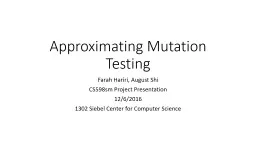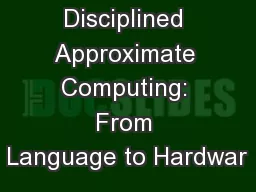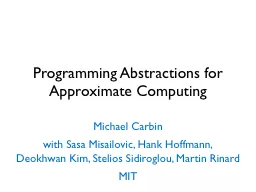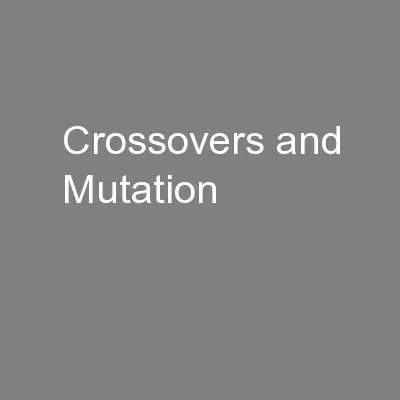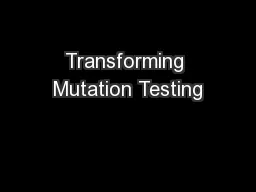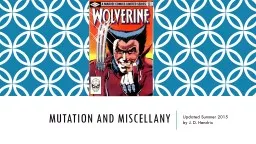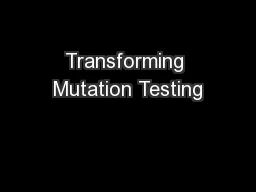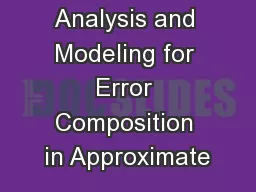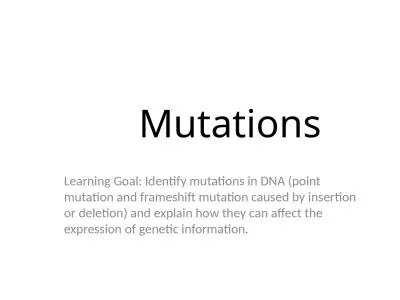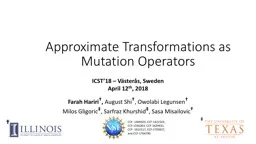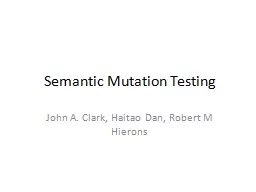PPT-Mutation Testing Meets Approximate Computing
Author : olivia-moreira | Published Date : 2018-03-06
Milos Gligoric 1 Sarfraz Khurshid 1 Sasa Misailovic 2 August Shi 2 ICSE NIER 2017 Buenos Aires Argentina May 24 2017 1 CCF1409423 CCF1421503 CCF1566363 CCF1629431
Presentation Embed Code
Download Presentation
Download Presentation The PPT/PDF document "Mutation Testing Meets Approximate Compu..." is the property of its rightful owner. Permission is granted to download and print the materials on this website for personal, non-commercial use only, and to display it on your personal computer provided you do not modify the materials and that you retain all copyright notices contained in the materials. By downloading content from our website, you accept the terms of this agreement.
Mutation Testing Meets Approximate Computing: Transcript
Download Rules Of Document
"Mutation Testing Meets Approximate Computing"The content belongs to its owner. You may download and print it for personal use, without modification, and keep all copyright notices. By downloading, you agree to these terms.
Related Documents

